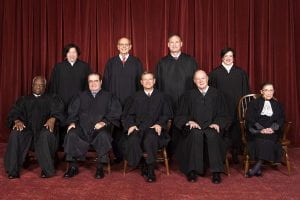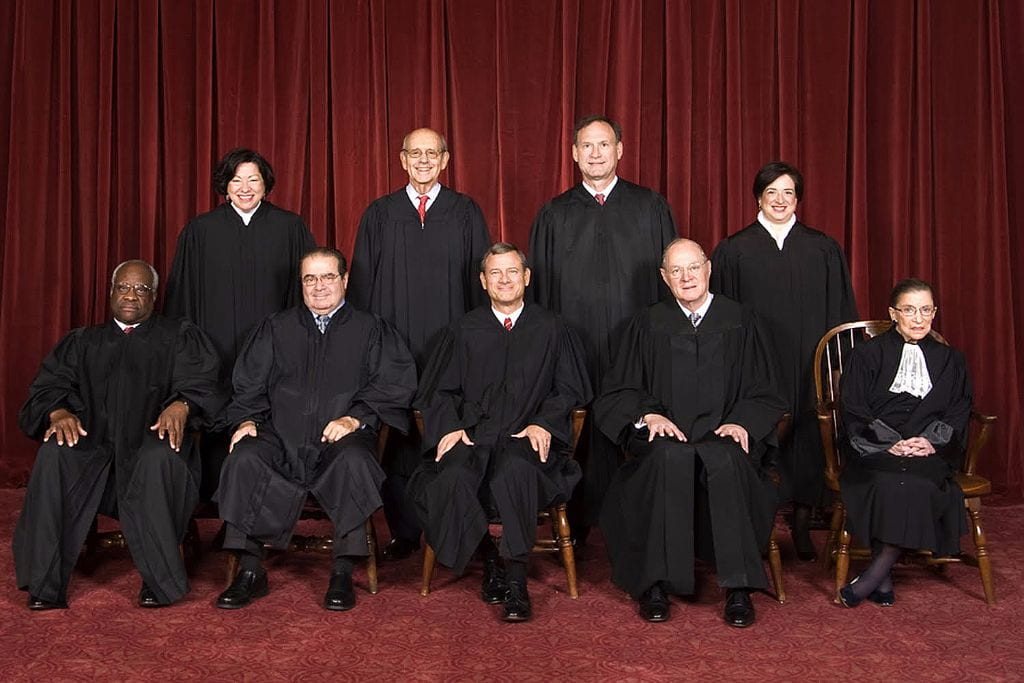BY RACHAEL BLANDAU – STAFF WRITER
The recent death of Supreme Court Justice Antonin Scalia has turned into a political battle, with both parties fighting for their right to nominate a new candidate. Although President Obama still has a little less than eleven months left in office, Republicans are eager to push him out of office prematurely in hopes to appoint someone who matches Justice Scalia’s deeply Conservative stance. Democrats are fighting back, saying that despite their majority in the House and the Senate, Republicans do not run the White House, and are thus overstepping their bounds. So, who should be allowed to nominate a new justice? Where does history stand on this issue?
Oddly enough, we look to the most recent case of a President nominating a Supreme Court Justice in their last year in office—in 1986, when Justice Antonin Scalia was appointed by then President Ronald Reagan. At the time, the situation was reversed, with Democrats wishing a new, hopefully Democrat, President would get to pick a judge that aligned with their views in the first few months of the Presidency. Also, like the Democrats now, Republicans were indignant with this response, and replied that they simply did not have that right. One of the most outspoken members of the Republican Party today, Kentucky’s own Senate Majority Leader Mitch McConnell, made his opinion known shortly after the news of Justice Scalia’s death:
“Presidents have a right to nominate,” Senator McConnell said, “just as the Senate has its constitutional right to provide or withhold consent. In this case, the Senate will withhold it.”
In 1986, McConnell was of the same opinion, though he was then on the side of the President. If Reagan’s nomination had been blocked, McConnell would have claimed that the Senate was being obstructionist—and now he wants to obstruct the President.
“The Senate will appropriately revisit the matter after the American people finish making in November the decision they’ve already started making today,” he stated.
Unfortunately for the American people, by blocking the President’s nomination, he would be going against a decision we made four years ago, and four years before that. We elected President Obama for eight years in office—not seven years and one month. In 1986 he seemed to want to vouch for the sitting President. Now, not so much.
So, historically and constitutionally, it is a fact that the current president always has and always will have the power to nominate a replacement for the Supreme Court. Yet, as McConnell made clear, it is not always the prerogative for the Senate to approve the President’s decision. Therefore, once President Obama made clear that he would be making a nomination, the Democratic side began scrambling for a nominee that wouldn’t be too hard for either side to handle—a justice that the Republican majority could not justify to reject.

Yet the stakes are also higher than ever before. There are eight justices in the Supreme Court, and with Justice Scalia’s death, there are four conservative-leaning and four liberal-leaning justices. Now is the opportunity to tip the scales. But it does not seem that the Obama administration is willing to take such a risk of getting their nominee rejected with only eleven months left in office.
Currently, there is not a definite list of viable candidates, and White House Press Secretary Josh Earnest left the field wide open when addressing the matter:
“There are still people being considered for inclusion on the list of people that the president may consider for filling a Supreme Court vacancy,” Earnest said. However, there are several names that have been tossed around during speculations, most notably Nevada Governor Brian Sandoval and DC Circuit Court Judge Sri Srinivasan.
Sandoval is a Republican and former Federal Judge, who sides with his fellow Republicans on gun rights, but is moderate in social issues. His party affiliation would be key to having him get approved by the Senate for the position, and his moderate stance on social issues would be easier for the President and his fellow Democrats to stomach.
Srinivasan is another candidate that will be hard for Senate Republicans to turn down, as they unanimously appointed him to the United States Court of Appeals in 2013. He is also an attractive choice for his bipartisan work for both President Bush and Obama. A confirmation of Srinivasan would also be historic, as he would be the first South Asian-American to serve on the Supreme Court.
While both men would be far from putting another steady liberal on the seat, as President Obama and his fellow Democrats would like, this nomination looks to be a dogfight that only compromise can settle. If McConnell and his cohorts continue to vow to block President Obama’s nomination, it could be over a year until the seat is actually filled, alongside the early chaos of a new presidency.
